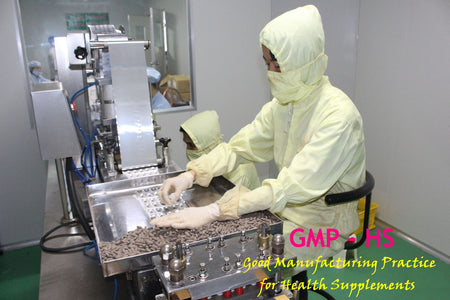Treatment of infectious arthritis
Define
Septic arthritis is a very painful infection in a joint. Bacteria or, less commonly, fungi can spread from other infected areas of the body to the joint. Sometimes the bacteria infect only the joint, leaving other areas of the body unaffected.
In septic arthritis, germs enter a joint – usually just one – and cause damage, causing severe pain, heat and swelling. Bacteria most commonly target the knee, although other joints can be affected by septic arthritis, including the ankle, hip, wrist, elbow and shoulder.
Children and older adults are more likely to develop septic arthritis. If treated within a week of the first symptoms appearing, most people make a full recovery.
Symptoms
Infectious arthritis often causes discomfort and difficulty using the affected joints. Signs and symptoms may include
Fever.
Pain in the affected joint, especially when moving the joint.
Swelling of the affected joint.
Warm the affected joint area.
In children, additional symptoms may include
No appetite.
Unstable state.
Tachycardia.
Uncomfortable.
If you are taking medications for other types of arthritis, you may not feel severe pain with infectious arthritis because these medications can mask the pain and fever.
In adults, the joints of the hands and feet – especially the knees – are often affected by septic arthritis.
In children, the hip joint is most likely to be affected. Children with infectious arthritis of the hip often keep their hips in a fixed position and try to avoid rotation.
In rare cases other joints, such as the neck, back and head, may be affected.
See your doctor if you have signs and symptoms that may indicate septic arthritis, such as sudden severe pain in a joint. If you are at increased risk for infection and notice signs and symptoms of infection, such as fever and chills, see your doctor immediately. Early treatment can stop the spread of infection and minimize damage to the affected joint.
Reason
Septic arthritis can develop when an infection elsewhere in the body, such as an upper respiratory infection or urinary tract infection, spreads through the bloodstream to a joint. Less commonly, a puncture wound, injection, or surgery near a joint can allow bacteria into the joint.
The synovium is poorly protected against infection. When bacteria reach the synovium, they can easily invade and begin to destroy cartilage. The body's response to the bacteria includes inflammation, increased pressure around the joint, within the joint, and reduced blood flow to the joint, all of which contribute to joint damage.
Types of bacteria
Several strains of bacteria can cause septic arthritis. The most common type associated with infectious arthritis is Staphylococcus aureus (staph) – a type of bacteria commonly found on the skin and in the nose.
In the past, infectious arthritis was more commonly caused by the bacteria that cause gonorrhea, a sexually transmitted disease. But the use of safer sex practices has led to a decline in gonorrhea and its complications, including infectious arthritis. However, in sexually active young people, gonorrhea is a potential cause of infectious arthritis.
Other infectious causes of arthritis
Bacteria are just one cause of joint infections. Viruses can also attack joints (viral arthritis), although this condition usually resolves on its own and causes little joint damage. In rare cases, a joint infection can be caused by a fungus (fungal arthritis). An infectious type of arthritis is reactive arthritis, which causes joint pain in response to an infection in another part of the body, even though the joints themselves are not infected.
Risk factors
Risk factors for infectious arthritis include:
Current joint problems. Diseases and conditions that affect the joints—including lupus and other types of arthritis, gout, and pseudogout—can increase the risk of septic arthritis. Artificial joints (prosthetic limbs), previous joint surgery, and joint injuries also increase the risk.
Rheumatoid arthritis medications. People with rheumatoid arthritis are at increased risk because of the medications they take. Rheumatoid arthritis medications can suppress the immune system, making infections more likely. In addition, diagnosing infectious arthritis in people with rheumatoid arthritis is difficult because many of the signs and symptoms are similar.
Thin skin. If the skin breaks easily and heals poorly, bacteria can have constant access to the body. Skin conditions such as psoriasis and eczema increase the risk of infection, including arthritis and skin wounds. People who regularly inject drugs are also at increased risk of infection at the injection site.
Weakened immune system. A weakened immune system can put you at increased risk for infectious arthritis because your body can’t protect itself against infection. People with diabetes, kidney and liver disease, and medications that suppress the immune system are at increased risk for infections.
Having a combination of risk factors often places you at higher risk than having just one risk factor.
Complications
Treatment with antibiotics combined with joint drainage usually resolves the infection. However, if treatment is delayed, the infection can quickly lead to joint degeneration and permanent damage.
Complications of infectious arthritis often include:
Osteoarthritis.
Joint deformity.
In severe cases, the joints may need to be surgically reconstructed. If the infection affects the prosthetic joint, the prosthetic joint may need to be replaced.
Testing and Diagnosis
The following tests often help diagnose infectious arthritis:
Joint fluid analysis. To find out exactly what type of bacteria is causing the infection, your doctor will usually take a sample of the fluid in your joint (synovial fluid) through a needle inserted into the space around your joint. Synovial fluid is normally clear and viscous. Bacterial infections can change the color and volume of the synovial fluid. Synovial fluid analysis can identify the organisms causing the infection.
Blood tests. Your doctor may order blood tests to see if bacteria are present in your blood.
X-rays and other imaging tests of the affected joint can also assess damage to the joint.
Treatment and medication
Doctors rely on antibiotics and drainage when treating septic arthritis.
Antibiotics, the doctor must identify the bacteria causing the infection, and then choose the most effective antibiotic to target the specific bacteria. Antibiotics are usually given through a vein in the arm first. Then, in some cases, oral antibiotics may be used. How long you take antibiotics depends on your health, the type of bacteria that is infecting you, and the severity of the infection. Typically, treatment lasts about 2-6 weeks.
Antibiotics carry the risk of side effects, including nausea, vomiting, and diarrhea. Allergic reactions are also possible. Talk to your doctor about side effects so they can be adjusted.
Draining infected fluid from a joint serves three purposes: It removes bacteria from the joint, relieves pressure on the joint, and provides the doctor with a sample to examine for bacteria and other organisms. The most common method of removing joint fluid is through arthroscopy. At the arthroscope, a tube with a video camera on the end is placed into the joint through a small incision. A suction tube is then inserted through small incisions around the joint to drain the infected joint fluid.
The doctor may remove fluid from the joint with a needle (arthrocentesis). Arthrocentesis may be repeated, usually daily, until no bacteria are found in the fluid. Hip joints, which are difficult to access, may require open surgery to drain the fluid. Repeat surgery is sometimes necessary.
Once the infection is under control, your doctor may recommend gentle movement to maintain joint function. Movement can keep joints from becoming stiff and muscles from weakening. Movement also encourages blood flow, and blood flow helps the body heal faster.
Lifestyle and remedies
If you have been diagnosed with infectious arthritis, self-care measures can help you feel better during treatment. Here are some suggestions:
Follow the instructions of your treating physician.
With your doctor's permission, participate in low-impact activities.
Use nonsteroidal anti-inflammatory drugs (NSAIDs), such as ibuprofen (Advil, Motrin, others) or aspirin, to relieve joint pain. Resting the affected joint and applying warm compresses may also help reduce pain and inflammation.









